Red Fort History: Best Complete Guide to India’s Iconic Monument
- Location: Delhi
- Entry Fee: Indians: ₹35 Foreigners: ₹500 Children below 15: Free
- Timings: 9:30 AM – 4:30 PM (Closed on Mondays)
- Categories: Forts, Historical Place, Tourist Places
- Tags: Delhi Tourism, Independence Day Red Fort, Lal Qila, Lal Qila history, Mughal Architecture, Red Fort Delhi, UNESCO Sites, UNESCO sites in India
- Location Taxonomy: Delhi, India
The Red Fort History is not just about bricks and walls—it is the story of India’s cultural pride, Mughal grandeur, colonial struggles, and the dawn of independence. Located in the heart of Delhi, the Red Fort (Lal Qila) is one of the most iconic monuments in India and a UNESCO World Heritage Site. Built by the Mughal Emperor Shah Jahan in the 17th century, it has witnessed centuries of political, cultural, and social transformation.
This article explores the Lal Qila History, architecture, cultural importance, and travel guide, making it a complete resource for students, travelers, and history enthusiasts. You can read : Ajoba Hill Fort: Best Trekking, History, and Mythological Significance
Origins of the Red Fort
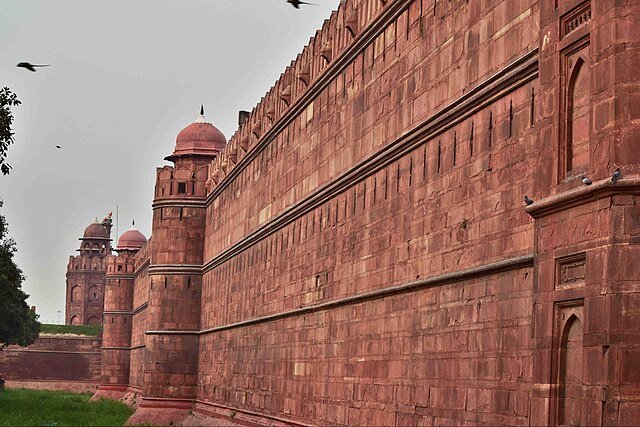
- Commissioned By: Mughal Emperor Shah Jahan
- Construction Period: 1638–1648 CE
- Architectural Style: Indo‑Islamic, Persian, and Timurid influences
- Purpose: Built as the new capital fort when Shah Jahan shifted his capital from Agra to Shahjahanabad (Old Delhi).
The Lal Qila History begins with Shah Jahan’s vision of creating a grand palace‑fort that symbolized Mughal power and artistic excellence.
Architectural Brilliance of the Red Fort
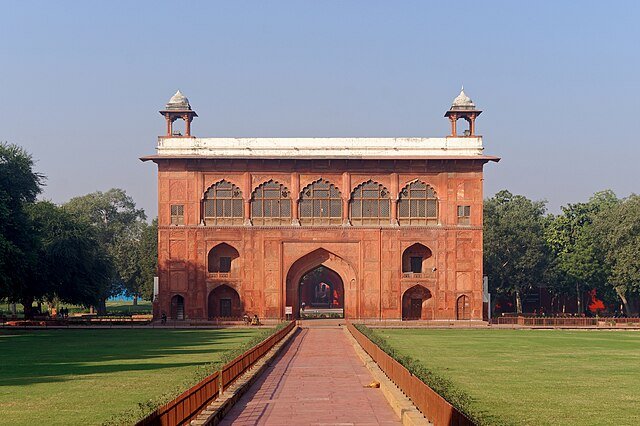
The Red Fort is spread over 254 acres and is enclosed by massive red sandstone walls.
Key Features:
- Lahori Gate: The main entrance, still used during Independence Day celebrations.
- Delhi Gate: Another grand entrance used by royals.
- Diwan‑i‑Aam: Hall of Public Audience where the emperor addressed citizens.
- Diwan‑i‑Khas: Hall of Private Audience, famous for the Peacock Throne.
- Mumtaz Mahal & Rang Mahal: Palaces for royal women, decorated with mirrors and fountains.
- Moti Masjid: A private mosque built by Aurangzeb.
- Hayat Bakhsh Bagh: A garden symbolizing paradise.
The fort’s design reflects a blend of Persian, Timurid, and Indian styles, making Red Fort History a masterpiece of Mughal architecture.
Red Fort in Indian History
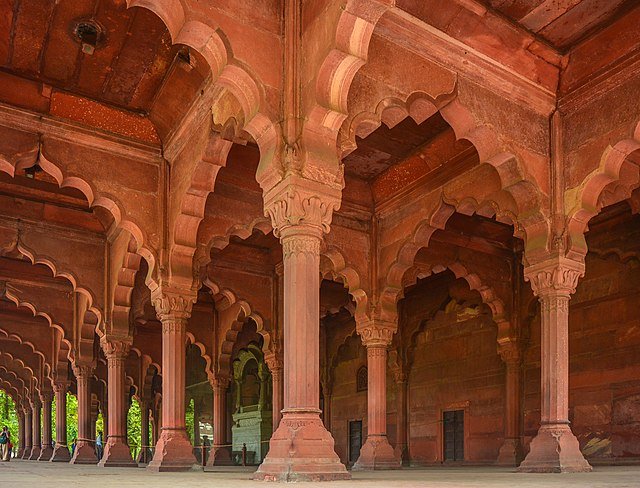
- Mughal Era: Served as the main residence of Mughal emperors for nearly 200 years.
- Colonial Period: After the 1857 revolt, the British took control and used it as a military camp.
- Independence Movement: The fort became a symbol of resistance against colonial rule.
- Post‑Independence: On 15th August 1947, Jawaharlal Nehru hoisted the Indian tricolor from the Lahori Gate, a tradition continued by every Prime Minister since.
Thus, Red Fort History is deeply tied to India’s freedom struggle and national identity.
Cultural and Symbolic Importance
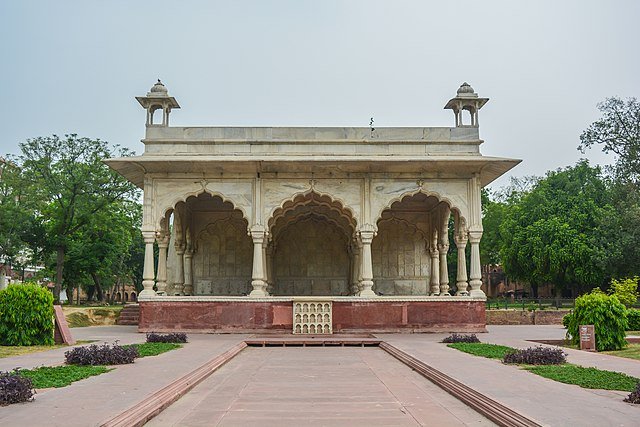
- UNESCO World Heritage Site: Declared in 2007.
- Independence Day Celebrations: Every year, the Prime Minister addresses the nation from its ramparts.
- Museums: The fort houses museums showcasing Mughal artifacts, arms, and paintings.
- Light and Sound Show: Narrates the Red Fort History every evening for visitors.
Location and Accessibility
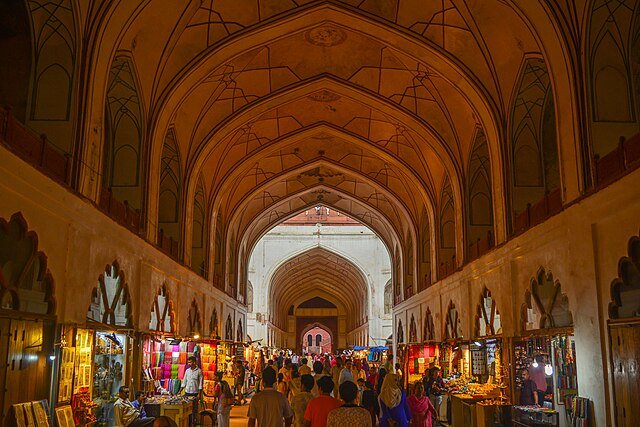
- City: Old Delhi, India
- Nearest Metro Station: Chandni Chowk / Lal Qila Metro Station
- Nearest Railway Station: Old Delhi Railway Station (2 km)
- Nearest Airport: Indira Gandhi International Airport (20 km)
Best Time to Visit the Red Fort
- October to March: Pleasant weather, ideal for sightseeing.
- Morning Hours: Less crowded, better for photography.
- Evening: Attend the light and sound show.
Entry Fees and Timings

- Timings: 9:30 AM – 4:30 PM (Closed on Mondays)
- Entry Fee:
- Indians: ₹35
- Foreigners: ₹500
- Children below 15: Free
Things to See at the Red Fort (List View)
- Lahori Gate
- Delhi Gate
- Diwan‑i‑Aam
- Diwan‑i‑Khas
- Mumtaz Mahal
- Rang Mahal
- Moti Masjid
- Hayat Bakhsh Bagh
- Museums
- Light and Sound Show
Nearest Tourist Places
- Jama Masjid (1 km): India’s largest mosque.
- Chandni Chowk (1 km): Famous for street food and shopping.
- Raj Ghat (3 km): Memorial of Mahatma Gandhi.
- India Gate (6 km): War memorial.
- Qutub Minar (15 km): Another UNESCO site.
Travel Tips for Visitors
- Carry a valid ID for entry.
- Photography is allowed, but tripods may be restricted.
- Hire a guide or audio guide for detailed insights.
- Avoid Mondays as the fort is closed.
- Combine your visit with Chandni Chowk food tour.
❓ FAQs about Red Fort History
Q1: Who built the Red Fort?
A: The Red Fort was built by Mughal Emperor Shah Jahan in 1638–1648 CE.
Q2: Why is the Red Fort important?
A: It was the residence of Mughal emperors, a symbol of India’s independence, and now a UNESCO World Heritage Site.
Q3: What is the best time to visit the Red Fort?
A: October to March is ideal due to pleasant weather.
Q4: Which events are associated with the Red Fort?
A: The 1857 revolt, British occupation, and India’s first Independence Day celebration in 1947.
Q5: What are the main attractions inside the Red Fort?
A: Diwan‑i‑Aam, Diwan‑i‑Khas, Rang Mahal, Moti Masjid, and museums.
Conclusion
The Red Fort History is a journey through India’s glorious past, colonial struggles, and independent identity. From Shah Jahan’s architectural vision to Nehru’s tricolor hoisting, the fort has been a silent witness to India’s transformation. Today, it stands not only as a monument of Mughal grandeur but also as a living symbol of India’s unity and pride.
